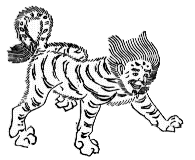https://omamorifromjapan.blogspot.jp/2011/07/gifu-folk-toys.html........................................................................................................................................................
Gifu town 岐阜市
Mieji 美江寺 Temple Mie-Ji 2 Chome-3 Miejicho, Gifu
dorei 美江寺の土鈴 clay bells / kaiko rei 美江寺蚕鈴
clay bells with silk worms . WKD : Mie-Ji Matsuri 美江寺祭り Festival at Temple Mie-Ji o-ko matsuri 美江寺御蚕祭 みえでら‐おこまつり - silk worm festival
.......................................................................
Gifu choochin 岐阜提灯 Chochin lanterns from Gifu  - quote -
- quote - The Egg shaped lantern is made of thin Japanese paper with candlelight inside, and is a beautiful craftwork item. It is an important piece that fits in well with many Japanese scenes throughout history. The paper uses the famous
Mino-washi, (Mino Japanese paper) produced in Gifu prefecture and the frame is also made from a good quality bamboo harvested in the nearby region. The history records indicate that the local feudal lord of Owari presented Gifu lanterns to the Tokugawa government in the 17th century.
Bamboo strips are constructed to make a tube shape and Japanese paper is pasted around it. There is a tray at the bottom for a candle. The paper makes the light grow brighter and gives one the ability to see better when walking through dark streets at night. When you place it at the door of your house, it functions as a nice porch light.
The lantern is not heavy and the paper shields the candlelight from being extinguished by winds. Openings of the top and bottom of the lantern help air circulate freely. The paper has cresses, like an accordion, making it easy to store when you are not using it.
Until the 17th century, the lanterns and candles were very expensive. Therefore, they were mainly used for a few occasions such as for religious ceremonies, as lighting accessories on the feet of nobles and samurai, and for police patrols at night. By the first half of the 19th century, mass production of candles became possible, which allowed lanterns to be more accessible among ordinary citizens. It was also the time of a relative calm and stable society where people were able to develop a taste of beauty and elegance. In the latter half of the 19th century, when international commerce began to become more active, the lanterns became popular for their ability to illuminate flowers and other romantic painting.
Gifu Lanterns come in different shapes and designs. But the one with an upside down egg shape and beautiful painting on the lampshade is considered to be the most standard. A Gifu Lantern can be an ideal decorative piece for your home, with or without light inside.
- source : japan-brand.jnto.go.jp/crafts - ........................................................................................................................................................
........................................................................................................................................................
Kani 可児(かに)

Hiromi tsuchi ningyoo 広見土人形 clay dolls from Hiromi This dancer girl resembles the clay dolls made in Asahi, Aichi prefecture.
愛知県の旭土人形
. . . CLICK here for more Photos !  Hime tsuchi ningyoo 姫土人形 clay dolls from Hime
Hime tsuchi ningyoo 姫土人形 clay dolls from Hime The small village of
Himejimura 姫路村 is often mixed up with the more famous town of Himeji, so they prefere the spelling HIME ヒメ.
The dolls were last made by Watanabe Kazuo 渡辺一夫, who died in 1981.
The dolls are painted with many fine details.
. . . CLICK here for more Photos ! ........................................................................................................................................................
Mizunami town 瑞浪市
Ichihara tsuchi ningyoo 市原土人形
clay dolls from Ichihara 
Daruma in the year of the Sheep
and
. Daruma and beckning cat . Originally the craftsmen came from Mikawa.
- - - - - - - - - -

Making clay dolls started at the end of the Edo period. Farmers used the clay from the fields to make dolls in the winter time.

tsuchibina 土びな hina dolls for the Doll Festival in March. Merchants came to collect these dolls and sell them in Japan. In the best times there were more than 50 doll makers.
The business died down after WW II. Now there are very few makers in town.
source : www.city.mizunami.gifu.jp  source : blog.nihondorei.com
source : blog.nihondorei.com Momotaro 桃太郎 as a clay bell. A naked Momotaro is quite seldom.
MORE . Momotaroo 桃太郎 Momotaro, the Peach Boy . Mizunami 瑞浪市 is also famous for its
"Demon Rock", Oni Iwa 鬼岩.
And a Setsubun festival where the demons are called into the home to bring good luck.
In Mizunami , they say " Oni wa uchi 鬼は内 Fuku wa uchi 福は内".
......................................................................................................................................
















































